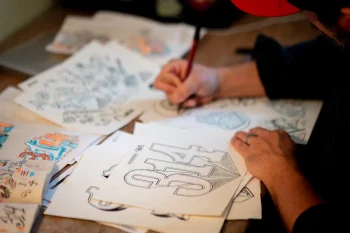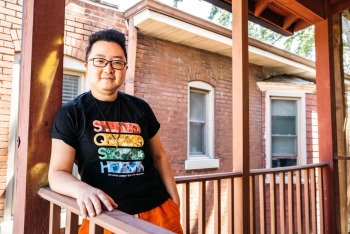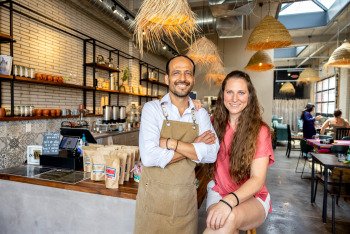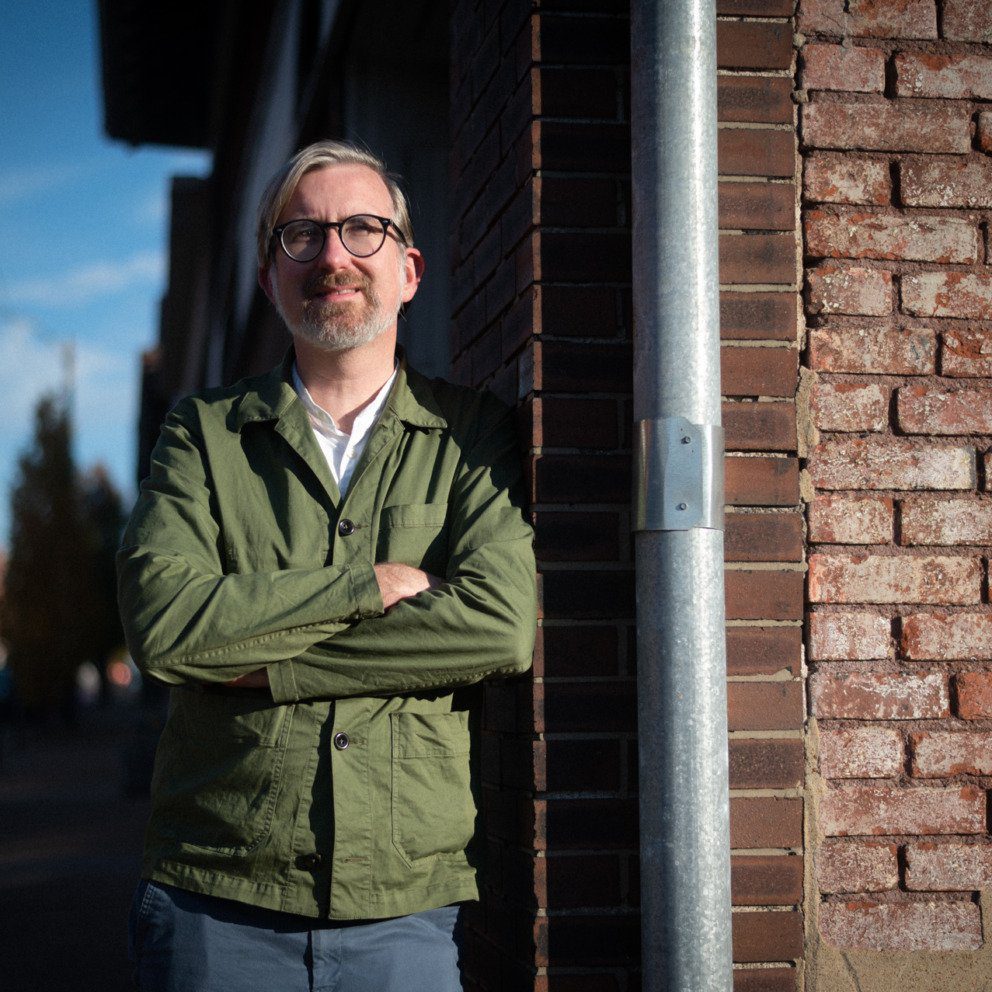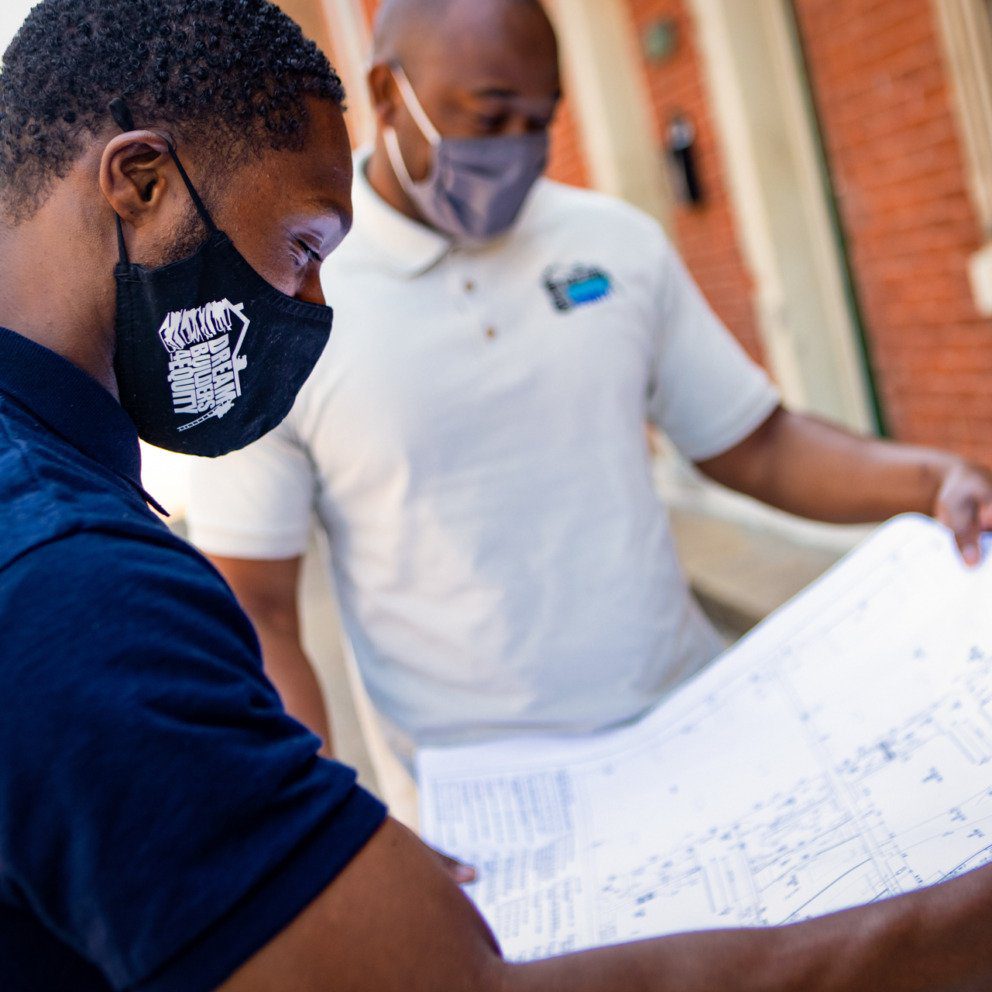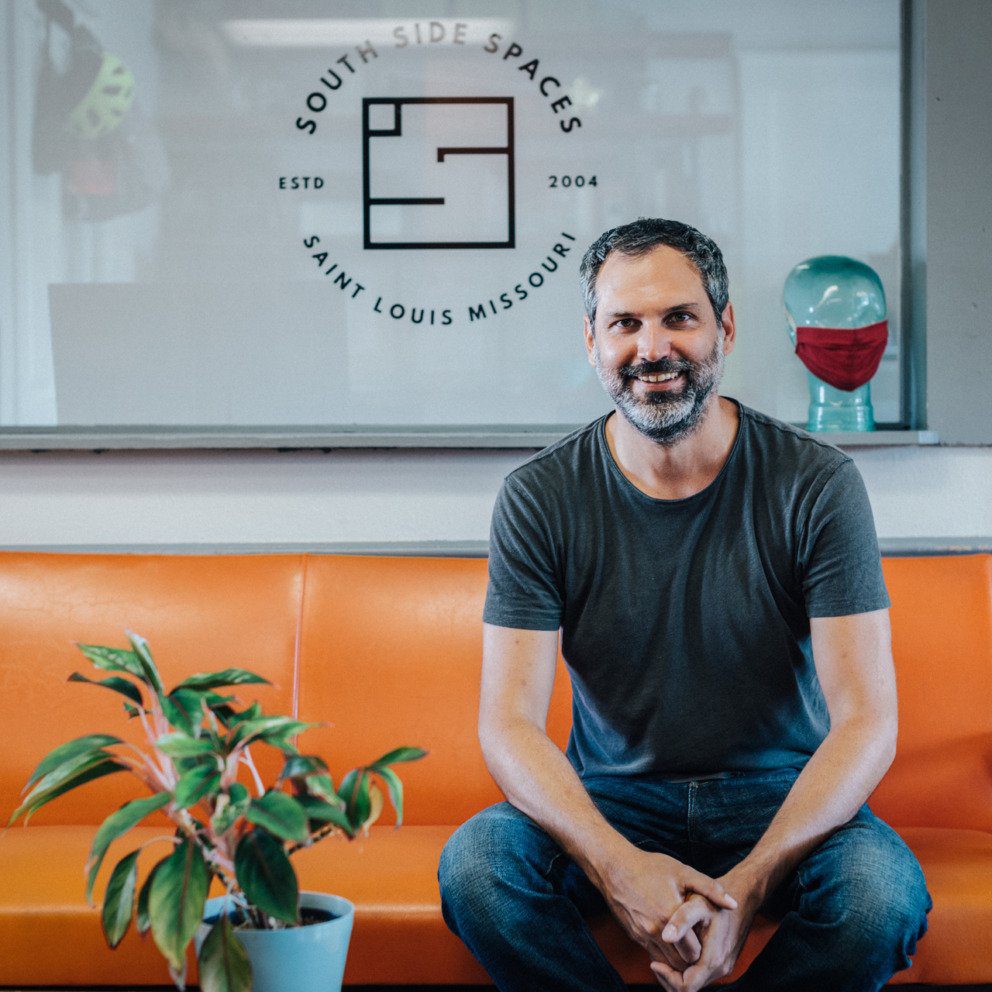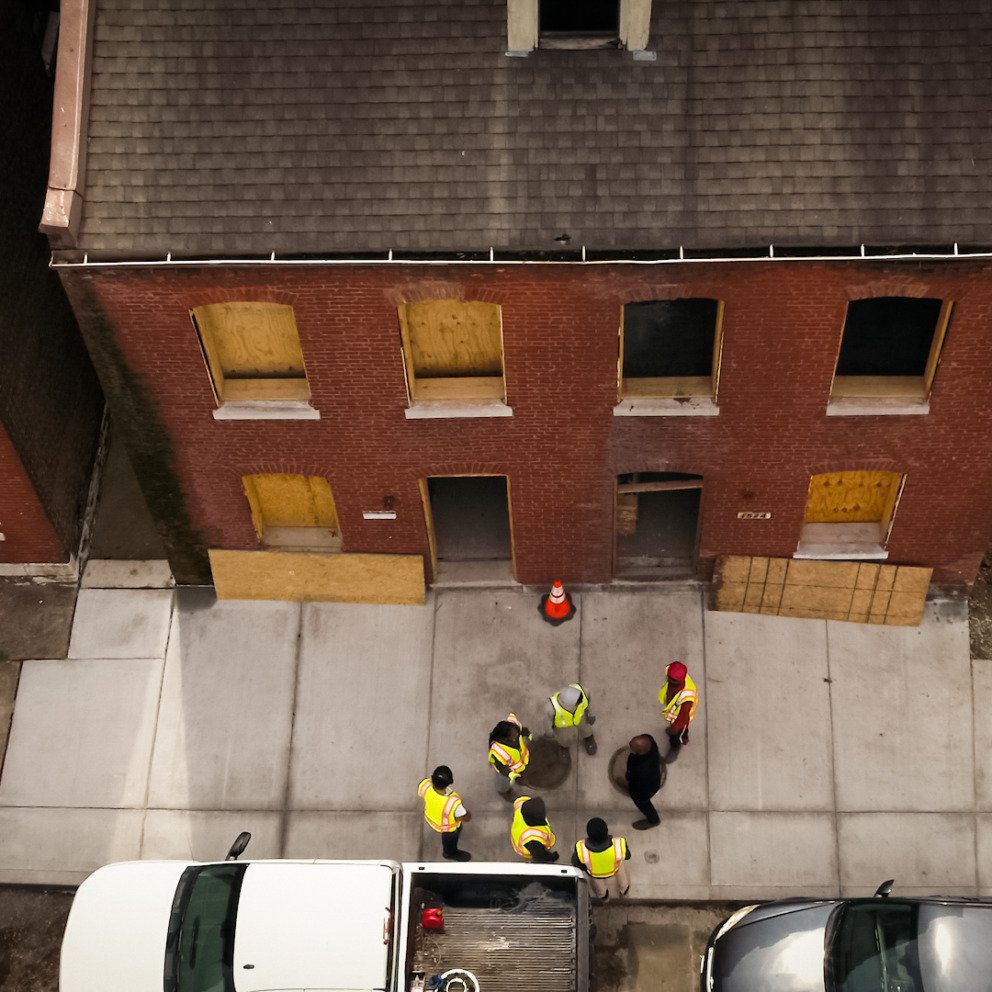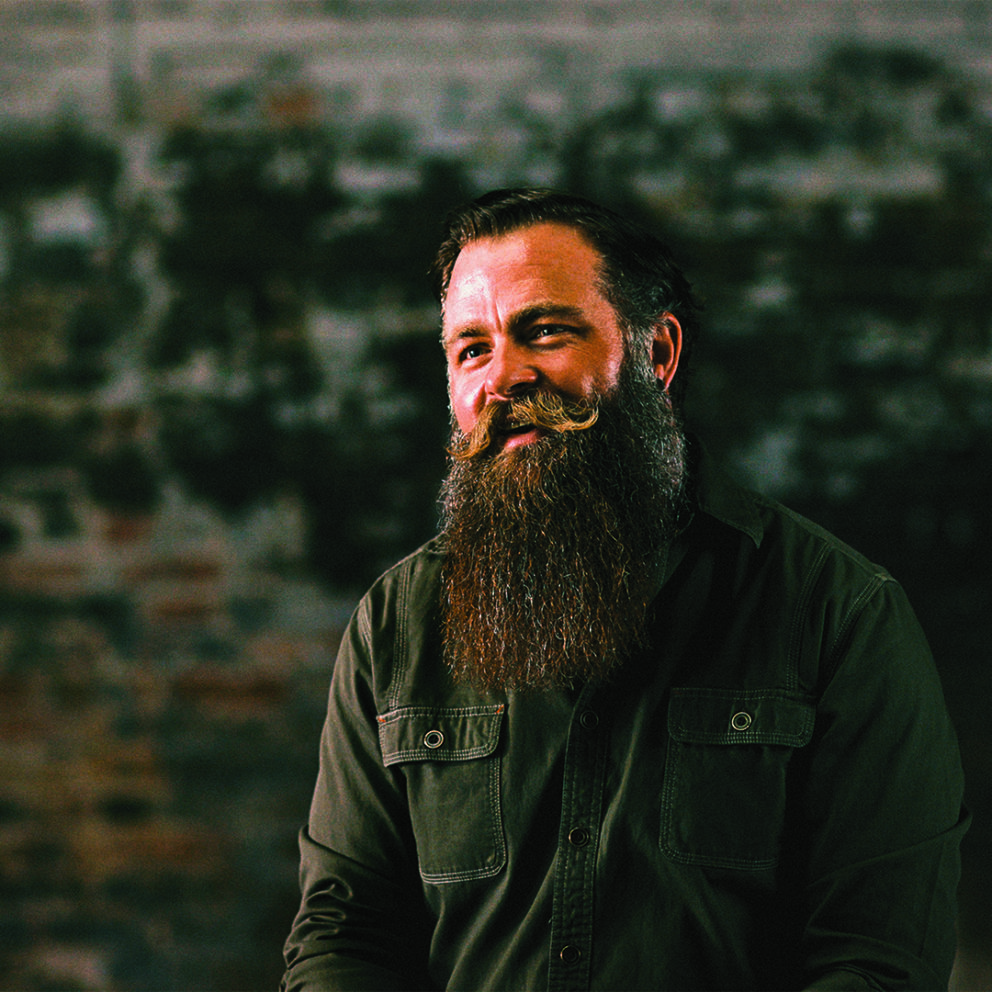Reclaimed
Treasure
With Refab, Eric Schwarz gives new life to St. Louis' past by repurposing the pieces of its architectural history.
In an unassuming 40,000-square-foot warehouse in Benton Park West, 140 years of St. Louis history sits in meticulously categorized rows and stacks.
But this isn’t a museum.
It’s the home of Refab – an organization that works to promote the collective and creative re-use of St. Louis’ built environment.
Led by founder and Executive Director Eric Schwarz, the Refab team carefully deconstructs buildings and homes slated for demolition and salvages any reusable building materials, fixtures and hardware, as well as unusual artifacts left behind. The materials then go to the Refab store where rehabbers, remodelers, homeowners and artists can buy them. In the Refab Lab, they also take reclaimed lumber and transform it into gorgeous custom tables, butcher-block countertops, shelves, mantles and more – all with the goal of keeping as much material as possible out of local landfills.
“The big difference between deconstruction and demolition is that with demolition, it happens very fast. The building gets crushed, turned into toothpicks and all those little toothpicks get put into trucks and taken to landfills,” Schwarz explains. “We use quite a bit more labor and it takes a lot longer for us to take a building down from roof to foundation. We take out interior components that are of value, and then we rip off the roof and basically un-build the house, piece by piece.
“That results in a lot more people being employed and a lot more value being extracted.”
Schwarz and his team salvage doors, windows and cabinetry, as well as hardwood flooring, plus more decorative items like beautifully crafted crystal doorknobs and brass plates, old built-in shelves, wrought iron balconies and vintage signs.
“This is just a great city for salvage,” says Schwarz. “We have an amazing stock of building materials. We’ve got some of the best bricks that were ever made, amazing terra cotta. We were a top producer of that. Same with the wood. We have the southern yellow pine, which is really popular. When you just get outside the city a little bit, you’re taking down barns with amazing hardwoods because Missouri is known for that as well.”
The best part, Schwarz says, is that everything has a history – and people who come through Refab’s doors are looking for that as much as the pieces themselves.
“Half of what sells these items is the story,” he says. “It feels good to keep materials out of the landfill and then to get to tell their story.”
Schwarz’ current favorite item in the warehouse is a stack of 14″ by 14″ dense southern yellow pine beams that are confirmed to have come from the 1904 World’s Fair, which was held in Forest Park. Some are adorned with hand painted “ghost signs” for pianos and telephones and bicycles, providing a unique insight into what was new and exciting at the time. The beams had been stuck in a 30,000-square-foot warehouse in North St. Louis for over a century before Refab disassembled the warehouse and found them.
The Refab team is currently working on an incredible project – the largest house they have ever deconstructed. The 11,000-square-foot home in Ladue was built for the prominent Pulitzer family and its remarkable contents include intricate brass hinges, custom hand-painted wallpaper and false-front bookshelves that served as hidden doors to a private study.
Schwarz’ interest in the built environment goes all the way back to his childhood in South St. Louis County.
“As a little kid, I wanted to be an architect. That was an enduring interest of mine. I went to architecture school at Drury University in Springfield, Missouri, and found that it wasn’t really the place for me,” he says. “Fortunately, I had a very good architecture professor who said, ‘You don’t need to study architecture as an undergrad – go travel the world, learn a foreign language, learn about people because you will eventually be designing for people.’ So I took his advice wholeheartedly.”
Schwarz traveled for several years, working and studying in Thailand, Colombia, South Korea and Germany. While abroad, he witnessed a lot of reuse happening in construction, and returned to St. Louis in 2008 with a renewed outlook.
“When I came back here, I applied a lot of what I had learned abroad and saw my home city with new eyes,” he says. “I saw it as an opportunity to circle back to architecture without having to go to school anymore – to start something that would benefit more folks than maybe I would’ve as an architect.”
While falling back in love with St. Louis, Schwarz did a lot of volunteering and spent a stint working at Habitat for Humanity, where he saw that there was an even bigger need to divert building materials from the landfill and get them into the hands of rehabbers and creative people.
Schwarz officially founded Refab in 2012 with its first job being the deconstruction of 81 housing units for Washington University. He secured a dilapidated warehouse in the Bevo Mill neighborhood and started filling it with building materials and selling them. Refab operated out of that space for three years before relocating to its current location, which it has occupied for the past six years. The next phase was launching the Refab Lab to further reduce the barrier to reuse.
“The plan had kind of always been to re-fabricate materials. I mean, it’s in the name,” Schwarz says. “So about three years ago, we decided to make that a thing. We hired a couple woodworkers and started making tabletops and countertops – a kind of unique butcher-block product from the reclaimed barn oak. Now we have nine different table designs.”
Since that time, demand has tremendously increased, leading Refab to expand its wood shop, with plans to double in size by next year. Since March 2020, people have spent more time at home and canceled expensive vacations, which fueled an unanticipated boom to Refab Lab’s products. The lab provides Schwarz with an opportunity to stimulate what he calls his “architecture brain.”
“I really get to use some of my design skills,” he says. “The greatest reward is to deliver that table and to have them say, ‘This is exactly what I had in my mind.’
“There’s nothing better than taking someone’s vision and turning it into reality.”
Much in the way Refab gives a second life to the built environment, it works to give a second chance to members of the St. Louis community. In the beginning, Refab worked with the St. Patrick Center to train and re-employ recently unhoused veterans. Since then, it has opened up the program to serve anyone who has recently experienced homelessness to help them get back into a good paying job, as well as a “green” job. If they are successful in the training program, Refab then tries to place them with an abatement company or carpenters union, where they can earn a good wage.
Refab employee Troy Johnson is a graduate of the training program and has worked in the warehouse for five years, processing donations as they come in to get them quickly out on the sales floor. He came to Refab through the St. Patrick Center and remains loyal to Schwarz and his team, taking great pride in carefully removing nails and screws from the old lumber and sorting it for customers to purchase and reuse.
“I love it. We all work together. Even though I take them to some tasks, they love me, and I love them as well,” Johnson says with an infectious smile. “I’ve learned a lot since I’ve been working here. The different things they do here with the wood is amazing. You see the wood in such a bad shape and then once it leaves here, it’s like wonderful, great stuff. I come back here a lot when I see them building stuff, just to see what the wood is going to turn out to be.”
Join the Story
- Learn more about Refab.
- Want to read more about St. Louis’ history and built environment? Check out our story: Preserving the Past, Shaping the Future.
